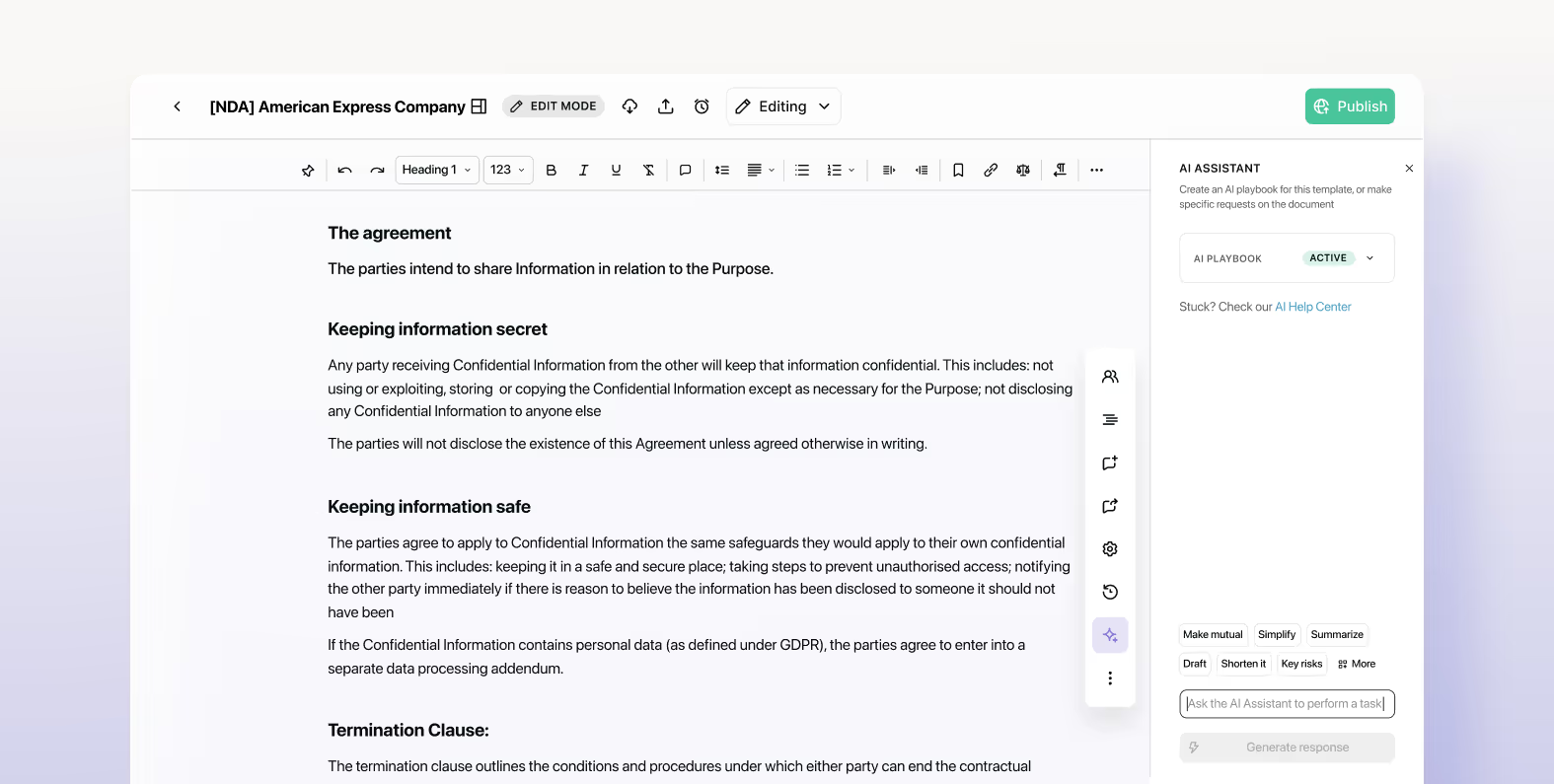Solutions
Customer Support
Resources
Download your free escrow agreement template and streamline your contract creation process.




Escrow agreements play a crucial role in securing transactions. They ensure that both parties meet their obligations, providing peace of mind and reducing risks.
This article explores the ins and outs of escrow agreements, their purposes, and how to effectively manage them using a template.
An escrow agreement is a legal document where a third party, known as the escrow agent, holds and regulates the payment of funds or assets required for two parties involved in a given transaction. This third party ensures that the transaction proceeds smoothly and that all obligations are met by both parties before the transaction is completed.
Escrow agreements serve several key purposes:
Escrow agreements are typically managed by an escrow agent. These might include banks and financial institutions, which have the infrastructure to handle large transactions securely, and law firms, which often manage escrow agreements in transactions involving significant legal considerations.
Specialized escrow companies might also be involved, and focus solely on managing escrow services across various industries.

Escrow agreements are used in a variety of situations, including:
A comprehensive escrow agreement template should include:

Escrow agreement templates are managed through a series of steps:
Managing escrow agreement templates can present several challenges:

Juro’s AI-native contract automation platform simplifies the creation, execution, and management of escrow agreements. Here's how Juro can help:
Self-serve contracts: Empower teams to handle simple escrow agreements independently, reducing the legal team's workload.
Accelerated contract workflow: Streamline contract lifecycles with automated drafting and negotiation functionality, ensuring deals close faster.
Centralized contract repository: Store all escrow agreements in one secure location, improving risk management and business-wide compliance.
Enhanced collaboration: Facilitate seamless collaboration on contracts across teams in a single workspace, enhancing communication and efficiency.
Integration with existing tools: Integrate Juro with your current systems, ensuring smooth contract management processes without disrupting workflows.
AI-driven insights: Gain valuable insights into contract performance, risks, and opportunities for informed decision-making.
Managing escrow agreements doesn't have to be complicated. Using a well-drafted template ensures that all parties' interests are protected, and automating the process with Juro can save time, reduce costs, and improve efficiency. Whether you’re in real estate, tech, or any other industry, Juro's platform is designed to meet your contract management needs.

Juro’s AI-native contract automation platform empowers all teams to create, agree, execute and manage contracts up to 10x faster than traditional tools. To find out more, hit the button below to book your personalized demo.
Juro is the #1-rated contract platform globally for speed of implementation.


Juro embeds contracting in the tools business teams use every day, so they can agree and manage contracts end-to-end - while legal stays in control.
Book your demo